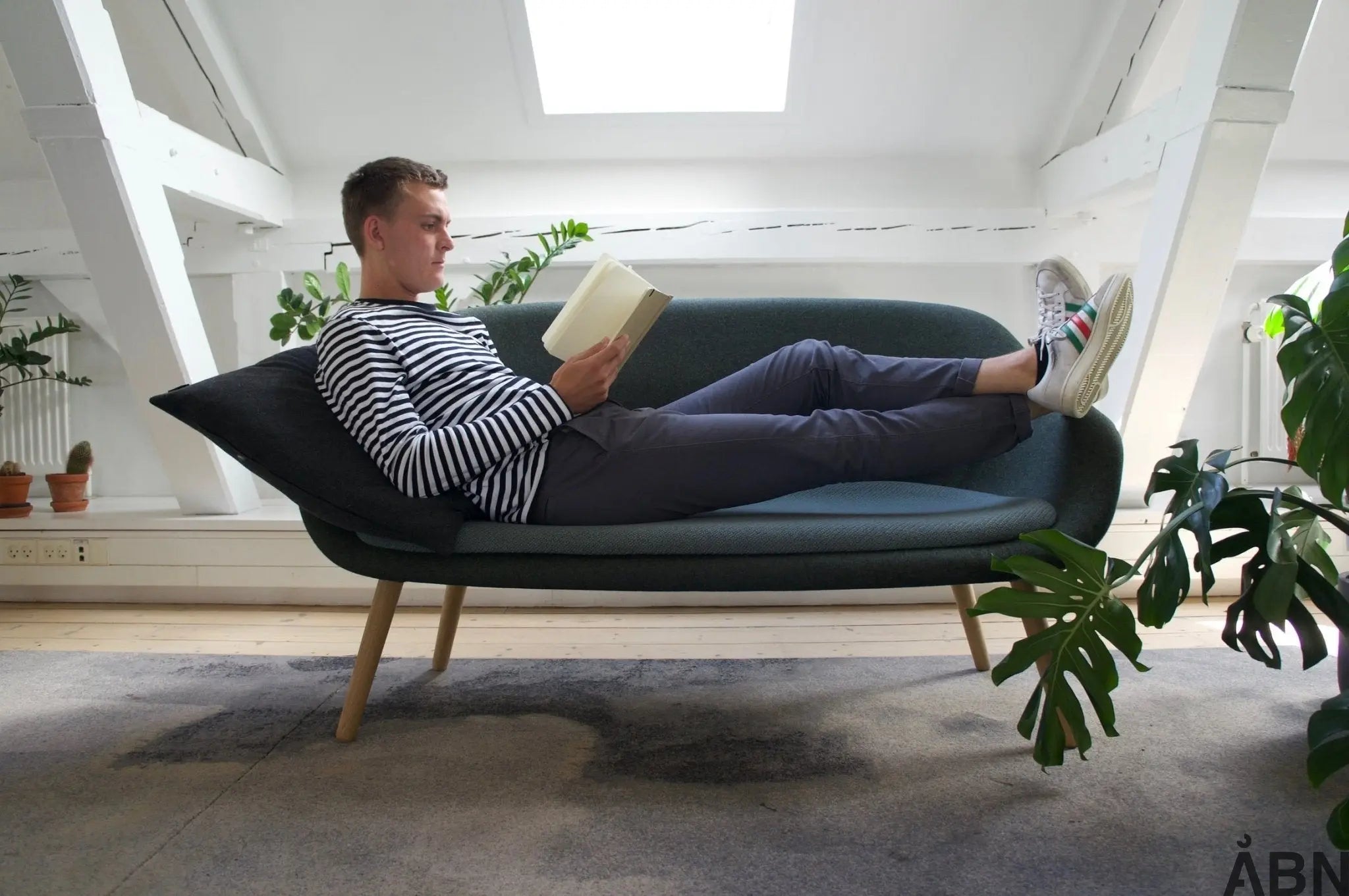As autumn approaches, the outside temperature starts to drop, which can affect the indoor climate in the office. This article will help office workers and HR to better understand how autumn affects the indoor climate and how to optimize the office's indoor climate this season.
Understanding indoor climate: Get a handle on the basic factors
Before we delve into the impact of autumn on the indoor climate of the office, we must first of all understand the basic elements that define our indoor climate. This will help us to be able to analyze and handle the changes that occur with the change of season.
What is indoor climate?
Indoor climate is the term for the physical and chemical conditions inside our buildings. It includes factors such as temperature, humidity, air quality, light and noise. A good indoor climate is not only essential for our comfort, but also our health and productivity. For office workers, the indoor climate can be of great importance for both well-being and efficiency.
Temperature and humidity
Temperature and humidity are two of the most decisive factors for the indoor climate. They can both vary considerably, both during the day and with the seasons. But why are these factors so important? Let's consider this: Is it easier to concentrate in an overheated, dry room, or in a cool, damp room? The answer is not so simple, because both too high and too low temperature and humidity can cause discomfort and affect our performance.
Air quality
The air quality in an office is closely linked to the number of people sharing the air, their activities and the products they use. Tobacco smoke, dust, chemical fumes from cleaning products and copiers, and even our own ventilation can affect air quality. Can we feel a difference in air quality when we change from summer to autumn? We will take a closer look at this in the next sections.
Light, noise and radiation
Other factors that affect the indoor climate are light, noise and electromagnetic radiation from electrical appliances. Too little natural light can affect our mood and energy levels, loud noise can disrupt concentration, and radiation can potentially have health consequences. These factors may be constant, but some may also change with the seasons, especially light levels.

How does autumn affect the indoor climate in an office?
As we move into autumn, the outside temperature starts to drop significantly. As a result, the humidity also drops in our office environments. But what does this actually mean for our indoor climate? And how can we best adapt to these changes?
Lower humidity can have a significant impact on our comfort and health. When the humidity drops, it can dry out our skin, eyes and mucous membranes. It can also make us more susceptible to colds and flu. Isn't it mind-blowing that something as simple as a drop in humidity can have such a big impact on our well-being?
Also, as we head into the colder months, we tend to keep windows and doors closed to keep the heat in. However, this can worsen the air quality in the office, as the fresh air from outside that we normally get into our office environments through ventilation becomes limited. This can lead to an increased concentration of bacteria and viruses, which can lead to an increased risk of diseases. And shouldn't we all do our best to avoid illness, especially in these times?
So what can we do to improve our indoor climate and our health in autumn? Should we just accept these changes as a natural part of the season? Or are there steps we can take to improve our situation? Read on to find out.
How to avoid illness in the office this autumn
If we want to keep our office environment healthy and productive over the autumn, there are a number of factors we need to be aware of.
If we want to keep our office environment healthy and productive over the autumn, there are a number of factors we need to be aware of. Keeping the CO2 level under control is the first step, but there are also other aspects of the indoor climate that can affect our health and well-being at work. Let's take a look at how we can avoid illness in the office this autumn.
Keep the office well ventilated
One of the most important methods to prevent the accumulation of CO2 and other harmful substances in the air is regular ventilation. When we inhale, we release CO2, and if there is insufficient ventilation, the level of CO2 in the air can rise to a point where it can affect our health and work performance. That's why it's important that we keep our offices well ventilated, especially in the cooler autumn months when we might be inclined to keep the windows closed to keep the heat in.
Keep cleanliness a priority
Autumn can also bring increased risks for the spread of colds and flu in the office. To combat this, it is essential to maintain a high level of cleanliness. This includes regular cleaning of surfaces, including desks and keyboards, as well as frequent hand washing or use of hand sanitizer. But how to ensure that this becomes part of the daily routine?
Build a healthy office culture
Building a culture where health and well-being are prioritized can make a big difference. For example, can we establish a routine where we all wash our hands when we arrive at the office in the morning or before we eat lunch? And what about encouraging regular breaks where we can get out into the fresh autumn air? Can we encourage the use of hand sanitizer by placing it strategically around the office?
It's not just about maintaining a healthy indoor climate, but also about building healthy habits that can help us avoid illness and stay productive during the fall.
Paying attention to these aspects of our workplace can make a big difference when it comes to keeping us healthy and happy in the office. Think about it - what can we do to improve our working environment today? How can we proactively tackle the challenges autumn brings to our indoor climate in the office?
This is how you avoid cold and drafts in the office in autumn
With the arrival of autumn, the temperature outside starts to drop and this can have a direct impact on the temperature inside the office. It is therefore important to take appropriate measures to ensure a comfortable indoor climate that can help maintain productivity and minimize sickness absence. But how do we avoid cold and drafts in the office in autumn? Here are some effective strategies:
Optimization of heating systems
First of all, it is important to ensure that the heating systems in the office work efficiently. We should have them checked and maintained by professionals before autumn sets in. This will help ensure that they can provide the necessary warmth when the temperature starts to drop. If we don't, it can lead to colder office environments, which can increase the risk of muscle tension and pain.
Minimizing drag
Drafts can also contribute to a cold office environment. This can be minimized by ensuring that windows and doors are properly insulated. If necessary, we can consider installing draft stops on doors and windows to keep the cold air out.
Furnishing of the office
Finally, the design of the office can also have an impact on how we experience the cold. By placing desks and work areas away from windows and doors, we can reduce the experience of drafts. In addition, using warm colors in the interior can create a visual warmth that can help create a sense of comfort even when the temperature drops.
Autumn doesn't have to be a time of discomfort and declining productivity in the office. By being proactive and making efforts to minimize cold and drafts, we can ensure that our workplace remains a comfortable and productive environment. So how do we best prepare for the upcoming season?
How can you optimize the indoor climate in an office in autumn?
We are now nearing the end of our discussion of autumn's impact on indoor climate. We have reviewed the basic factors surrounding indoor climate, understood how autumn affects the indoor climate in an office, and we have also given you some practical tips to minimize these effects. Now we will focus on some of the ways we can optimize the indoor climate in an office in the autumn.
Optimization of ventilation systems
Optimizing ventilation is important for a healthy indoor climate, especially in the autumn period. Ventilation is essential for both our comfort and health, as it helps to avoid the accumulation of harmful substances such as CO2.
It can be tempting to close windows and doors to conserve heat, but this can create an unhealthy environment. It is therefore recommended to open windows for a short time each day to ensure a fresh air flow and remove any harmful particles.
If it is not possible to open windows, it may be a good idea to install a mechanical ventilation system. These systems can automatically control the air flow and ensure fresh and clean air.
Maintenance of ventilation systems
Good maintenance of ventilation systems is essential to ensure their efficiency and longevity. This may include regular checks of filters and ducts to ensure they are clean and free of blockages. It is also important to hire a professional to perform an annual inspection of the system to identify and fix any problems.
Also, if we use a mechanical ventilation system, we must make sure that it is properly calibrated. This means that it must be set to bring in the right amount of fresh air and remove the used air. Remember that an inefficient fan can consume more energy without producing the desired results. By purchasing an external indicator of the state of the indoor climate, you can easily keep an eye on whether the ventilation is set correctly. This will help ensure a healthy indoor climate, even when fall brings colder temperatures.







